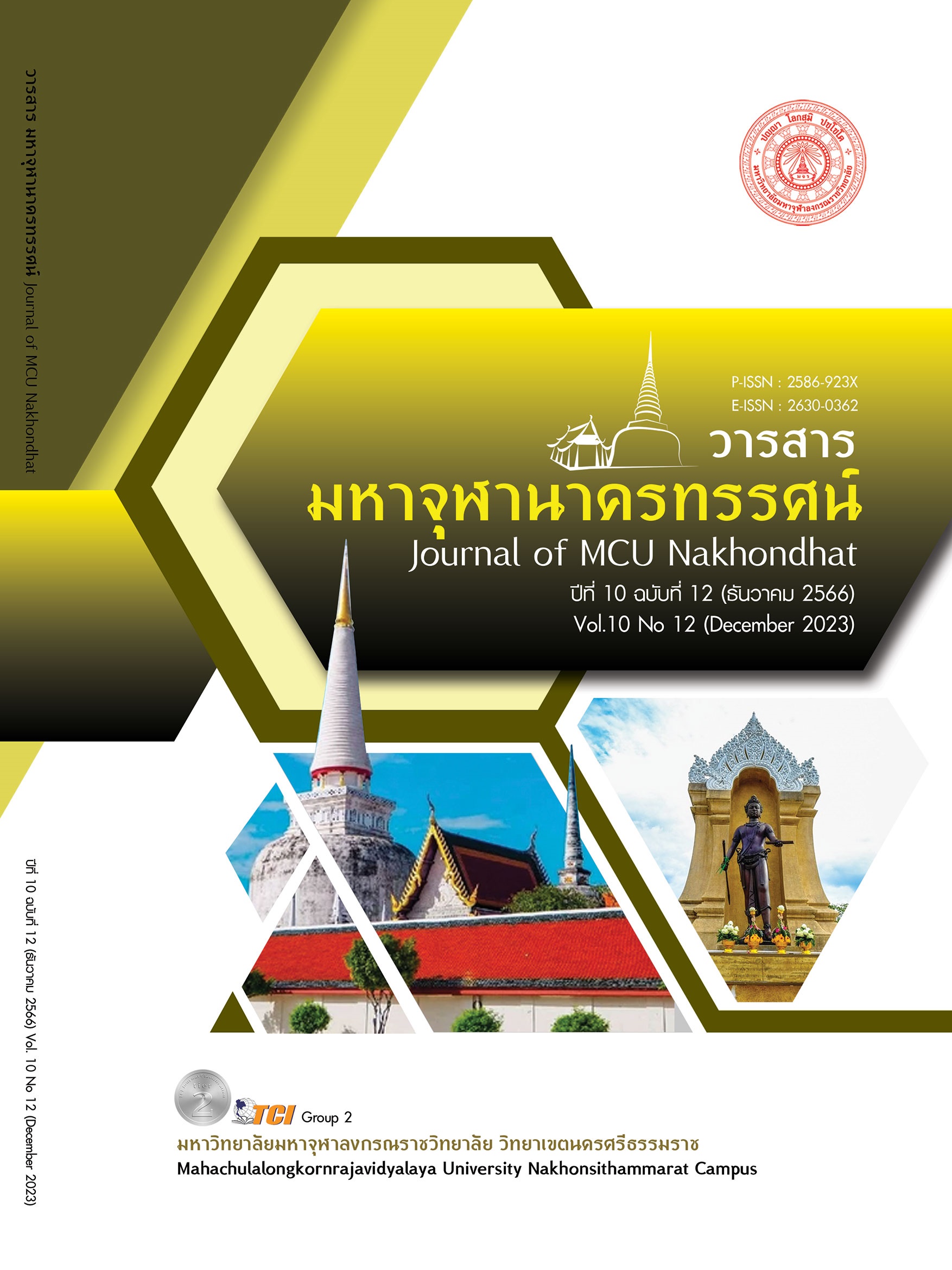DEVELOPMENT OF CAESALPINIA SAPPAN L. VARIETIES BY SEEDING TO PRESERVE THE VALUE OF THAI HERBS
Main Article Content
Abstract
This research article aims to study on the Caesalpinia Sappan L. propagation process by seeds to get healthy seedlings. Using operational research methods Use questionnaires, observation tools, and use AIC techniques by selecting specific methods. The sample group includes Sappan seedlings grown from seed. Analyzed using frequency statistics, percentages, descriptions and overall summaries. The results of the study are divided into 2 parts. 1) Seed preparation: It was found that seeds must be harvested from the mother plant. Brown pods were picked up and collected during February-April. Sort out only the perfect seeds, light brown without insect bites, no moldy fibers and no atrophy. From a total of 15 kilograms of seeds harvested, it can be determined that a mature pod weighing 1 kilogram has approximately 100 pods containing approximately 300 seeds, with each pod containing 2 - 4 seeds. and 2) seeding, it was found that when the separated Sappan seeds were planted in prepared nursery bags and watered twice a day. It was found that the seed germination rate was 100% completely after 15 days of sowing. The advantages of cultivating Sappan by seeds are a complete taproot system of seedling, easy method with a large amount productions. The results of this study can be used as a guideline for starting the development of Sappan raw material production from seed preparation and seed propagation until complete seedlings. Using a nursery period of 6 months, the seedlings have a height of approximately 40 - 60 cm, which is ready for further planting.
It reflects that planting from perfect, quality seeds will affect the germination rate of the seedlings. The advantages of cultivating Sappan by seeds are a complete taproot system of seedling, easy method with a large amount productions. The results of this study can be used as a guideline for starting the development of Sappan raw material production from seed preparation and seed propagation until complete seedlings.
Article Details

This work is licensed under a Creative Commons Attribution-NonCommercial-NoDerivatives 4.0 International License.
References
กรมป่าไม้. (2557). ไม้เศรษฐกิจ 58 ชนิด. เรียกใช้เมื่อ 27 มีนาคม 2565 จาก https://www.forest.go.th
กรมศิลปากร. (2542). ตำราเวชศาสตร์ฉบับหลวง เล่ม 1. กรุงเทพมหานคร: อมรินทร์พริ้นติ้งแอนพับลิชชิ่ง.
กรมศิลปากร. (2542). ตำราเวชศาสตร์ฉบับหลวง เล่ม 2. กรุงเทพมหานคร: อมรินทร์พริ้นติ้งแอนพับลิชชิ่ง.
คณะกรรมการนโยบายสมุนไพรแห่งชาติ. (2566). แผนปฏิบัติการด้านสมุนไพรแห่งชาติ ฉบับที่ 2 พ.ศ. 2566 - 2570 (พิมพ์ครั้งที่ 1). กรุงเทพมหานคร: บริษัท เปเปอรี่ จำกัด.
มูลนิธิสุขภาพไทย. (2562). ฝางเสน บำรุงโลหิตให้สตรี บำรุงร่างกาย แก้กระหายน้ำ. เรียกใช้เมื่อ 30 พฤษภาคม 2565 จาก https://www.thaihof.org
ราชกิจจานุเบกษา. (2558). พรรณไม้ในพระราชบัญญัติสวนป่า (ฉบับที่ 2) เล่ม 132 ตอนที่ 44 ก (26 พฤษภาคม 2558).
ราชกิจจานุเบกษา. (2558). พระราชบัญญัติสวนป่า (ฉบับที่ 2). เล่ม 132 ตอนที่ 44 ก หน้า 1 (26 พฤษภาคม 2558).
ราชกิจจานุเบกษา. (2566). ประกาศคณะกรรมการพัฒนาระบบยาแห่งชาติ เรื่องบัญชียาหลักแห่งชาติ พ.ศ. 2556. เล่ม 130 ตอนพิเศษ 126 ง (30 กันยายน 2556).
วุฒิชัย มูลศิลป์. (2558). ไม่จิ้มก้อง ไทยยุติความสัมพันธ์กับจีน สมัยรัชกาลที่ 4 - 5. วารสารราชบัณฑิตสภา, 40(3), 85-86.
สันต์ ท. โกมลบุตร. (2557). จดหมายเหตุ ลา ลูแบร์ ราชอาณาจักรสยาม. (พิมพ์ครั้งที่ 4). กรุงเทพมหานคร: ศรีปัญญา.
สำนักคุ้มครองภูมิปัญญาการแพทย์แผนไทย. (2555). คัมภีร์ธาตุพระนารายณ์ฉบับใบลาน (ตำราพระโอสถ
พรนารายณ์). กรุงเทพมหานคร: โรงพิมพ์องค์การสงเคราะห์ทหารผ่านศึก ในพระบรมราชูปถัมภ์.
เสงี่ยม พงษ์บุญรอด. (2522). ไม้เทศเมทองไทย สรรพคุณยาเทศและยาไทย. กรุงเทพมหานคร: โรงพิมพ์กรุงธน.


